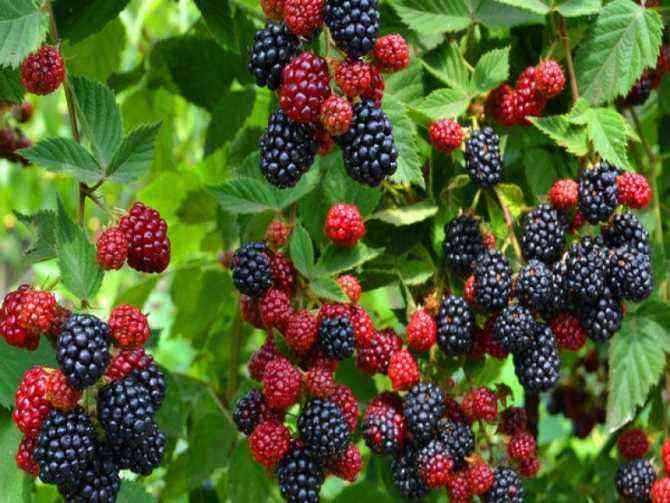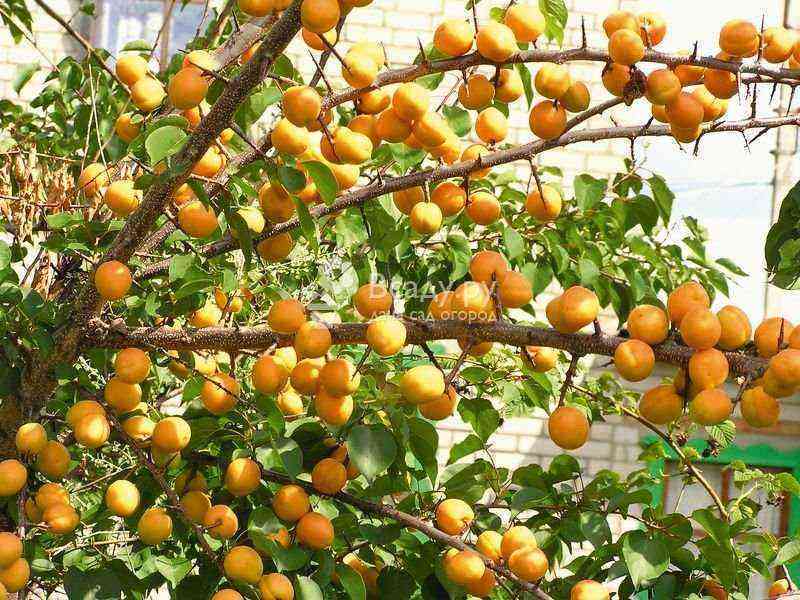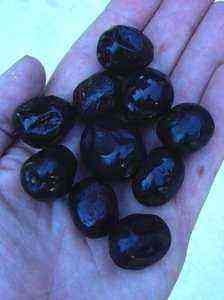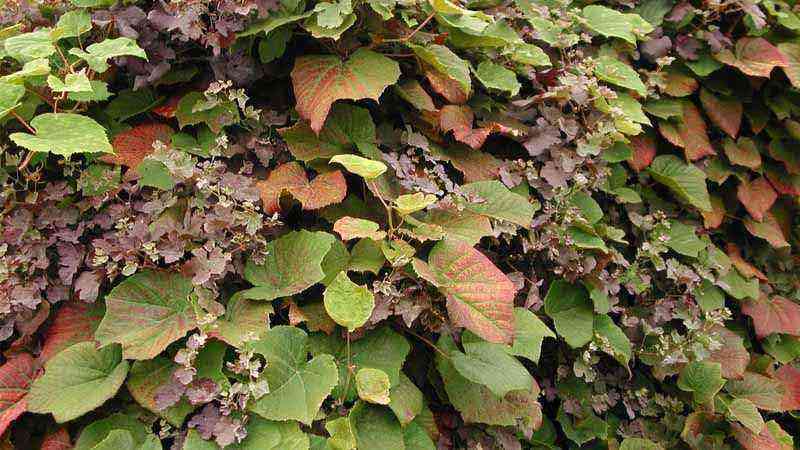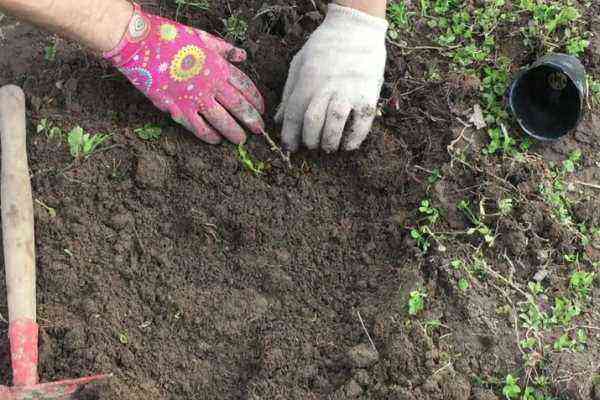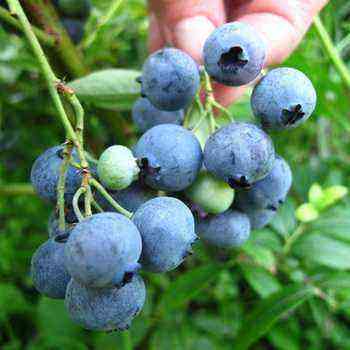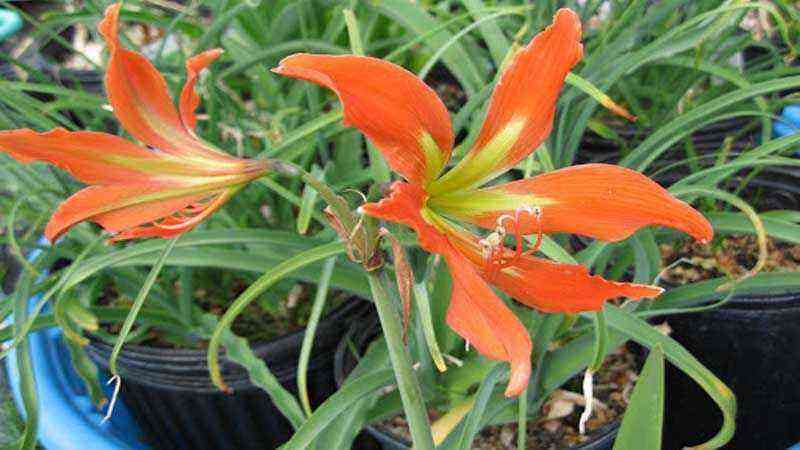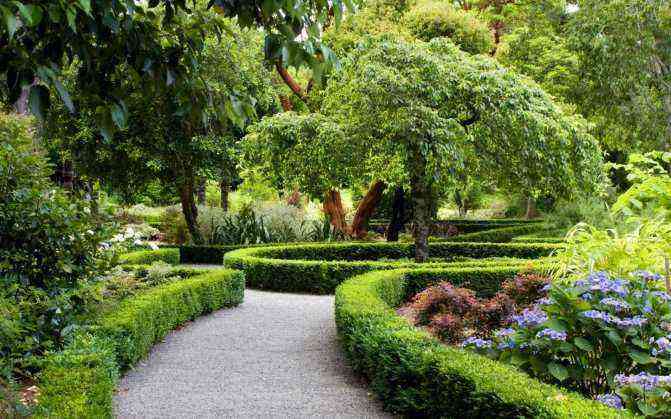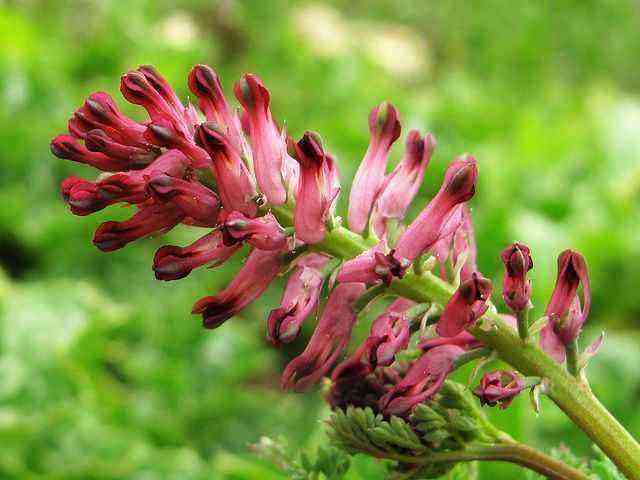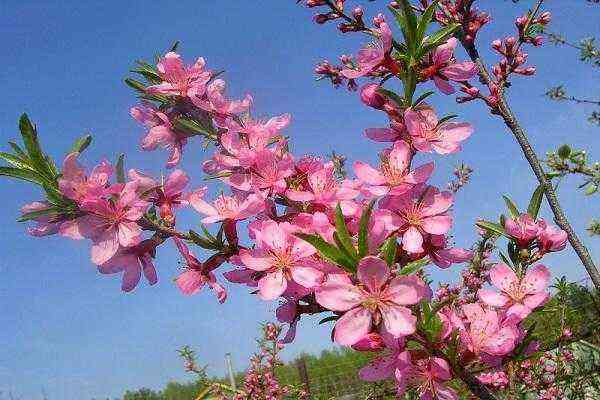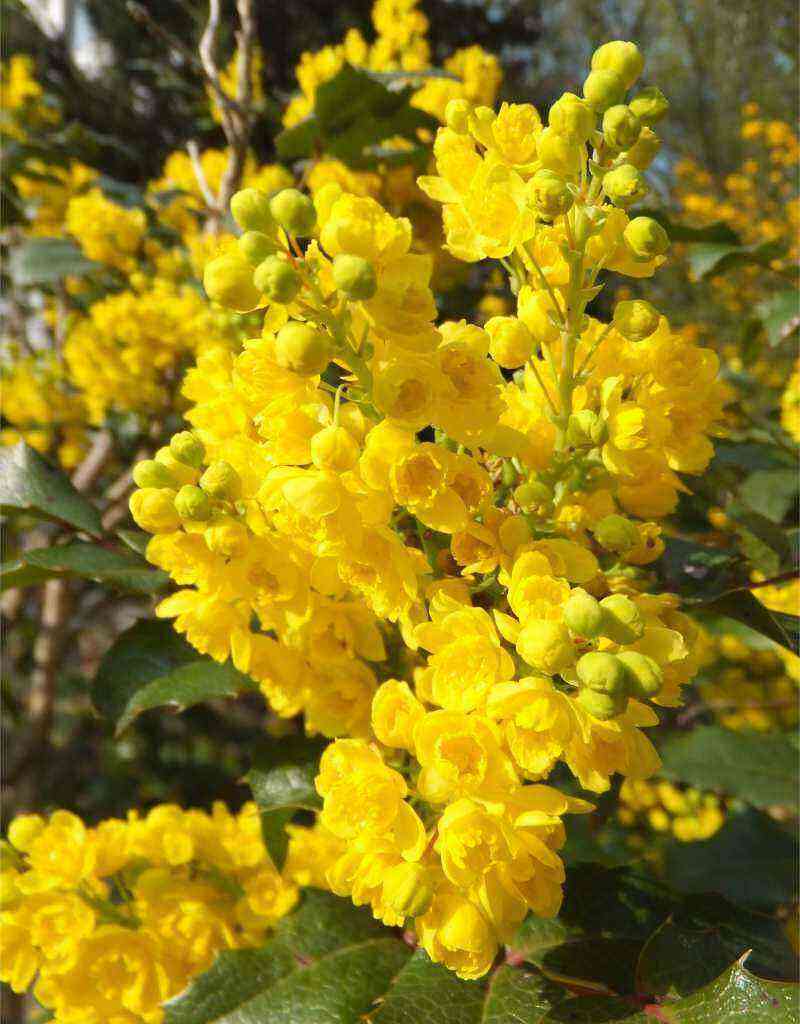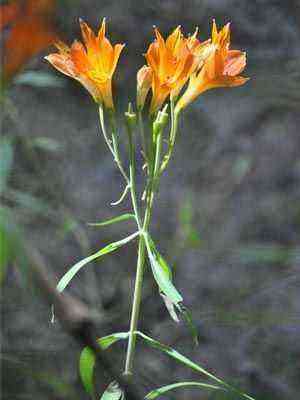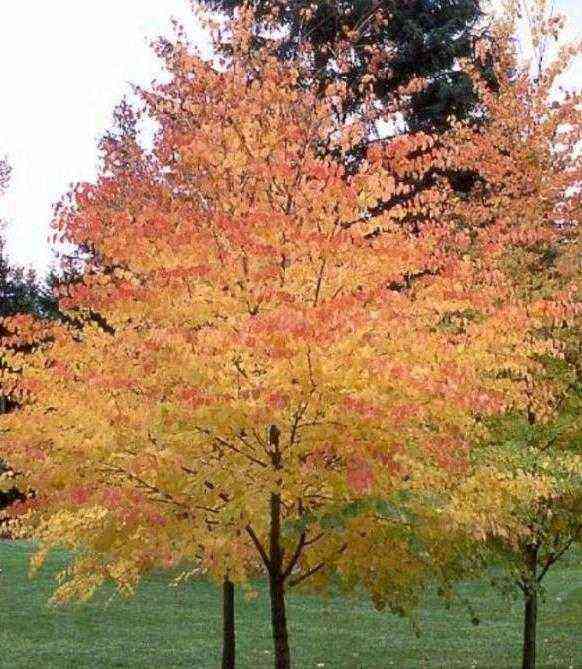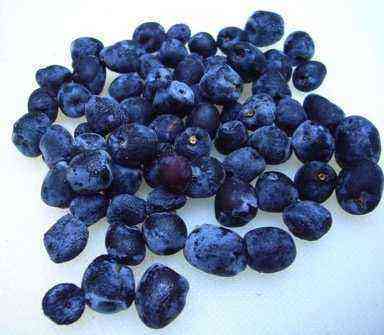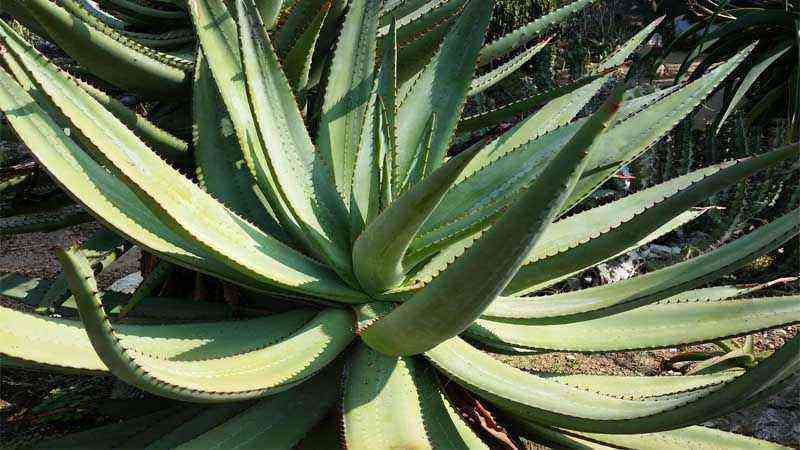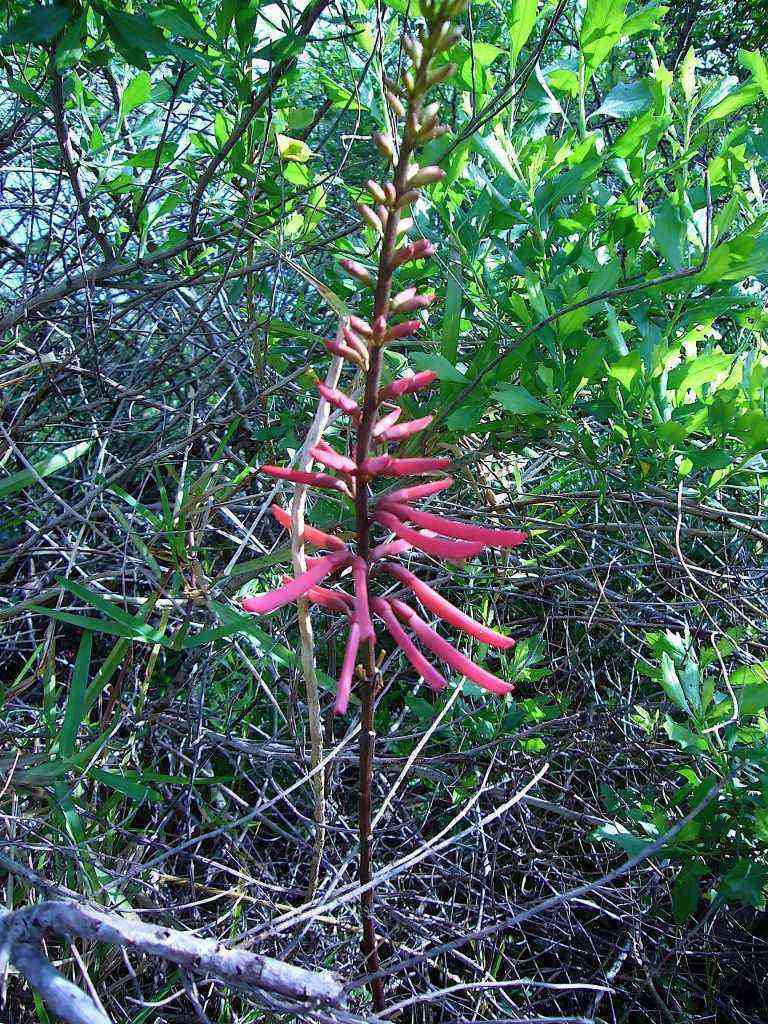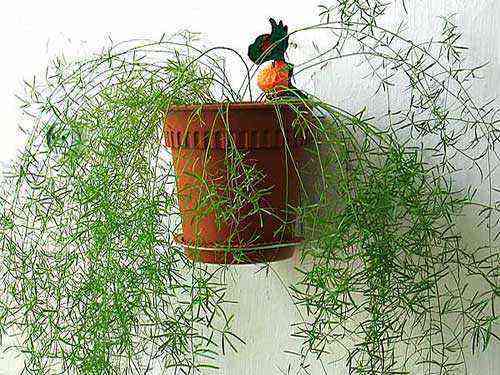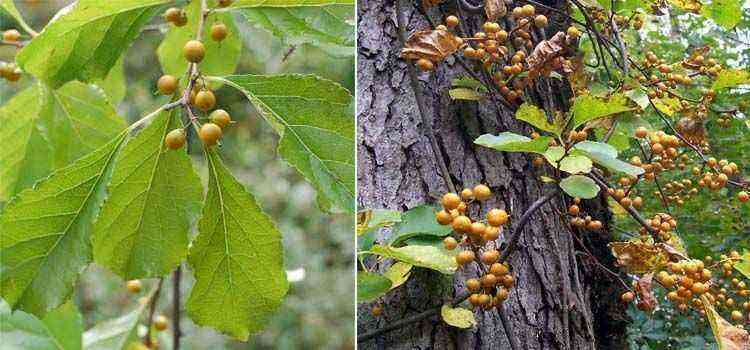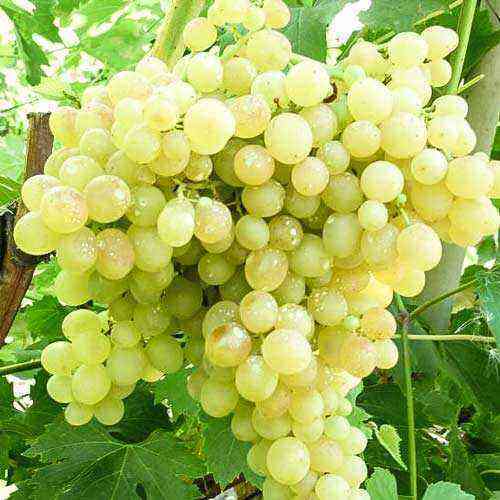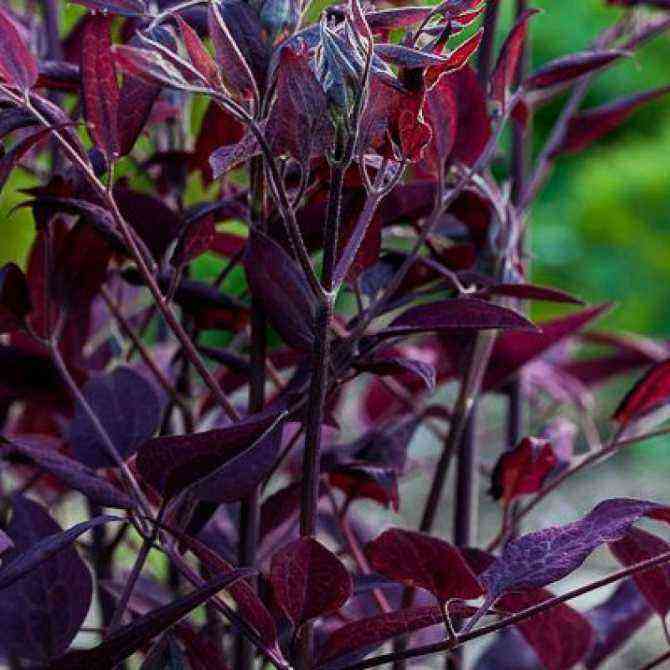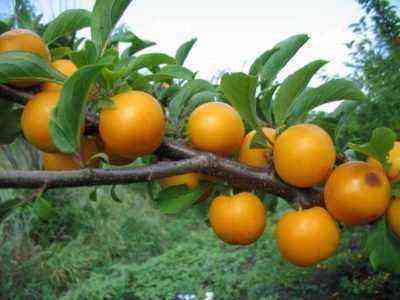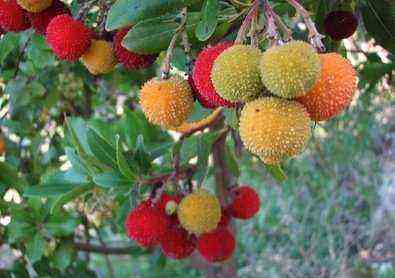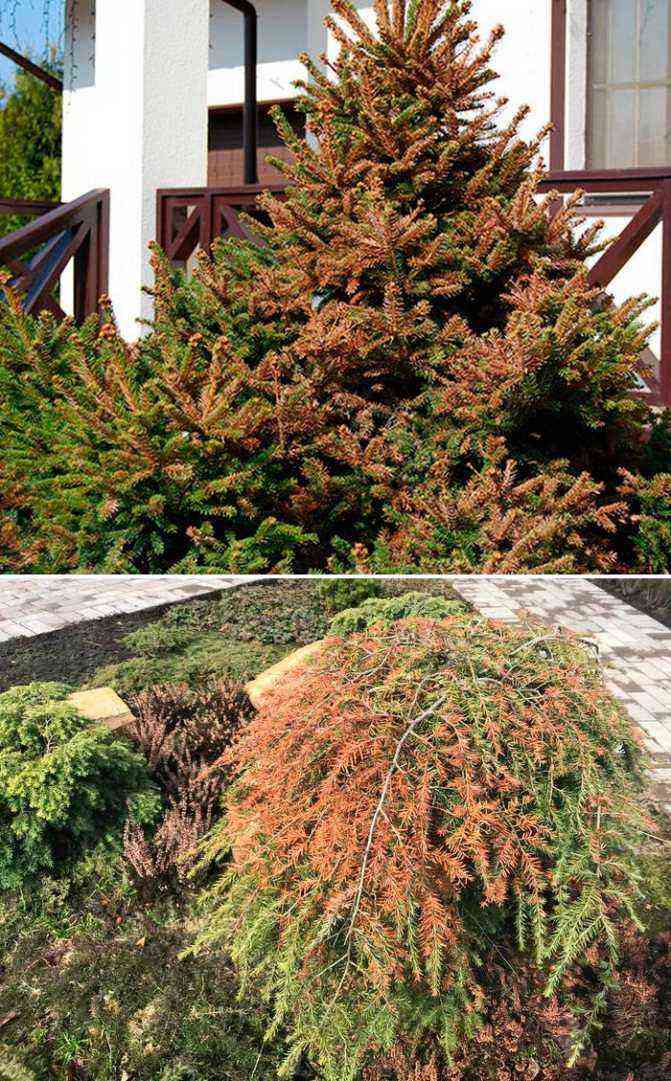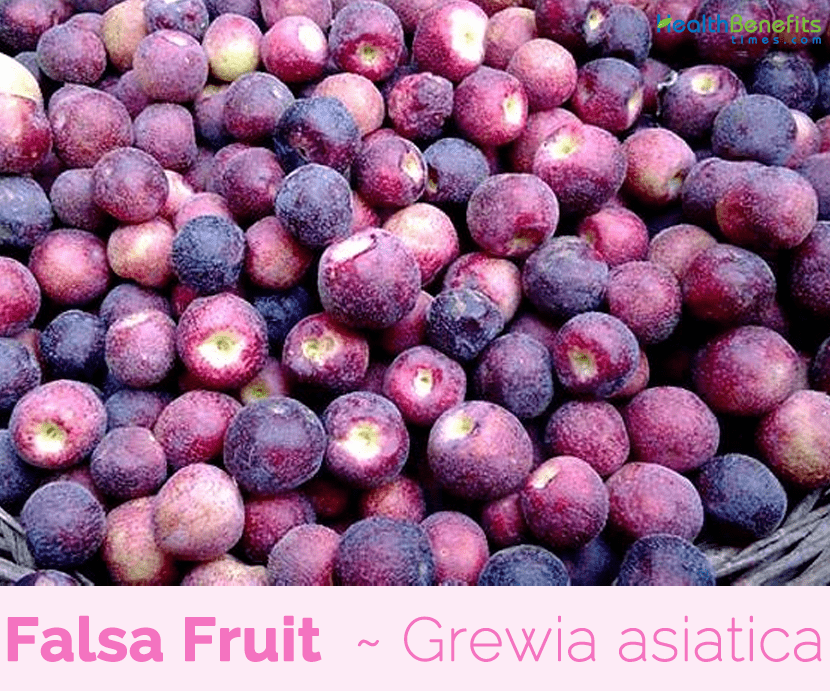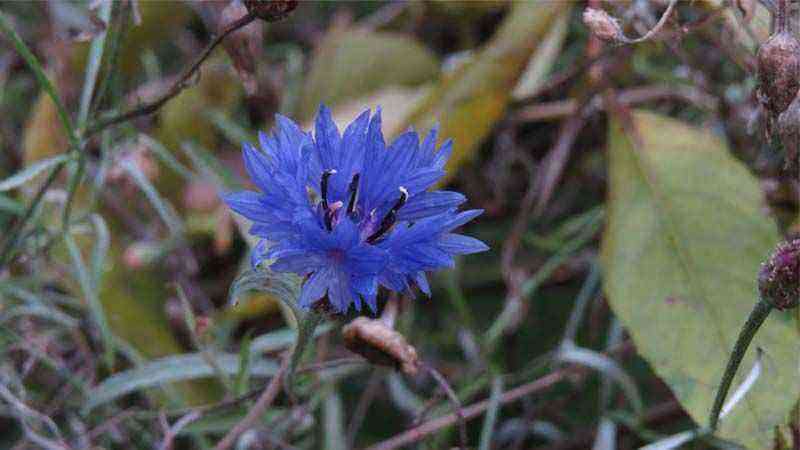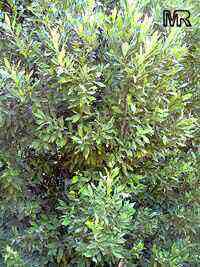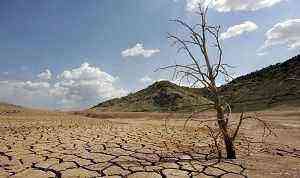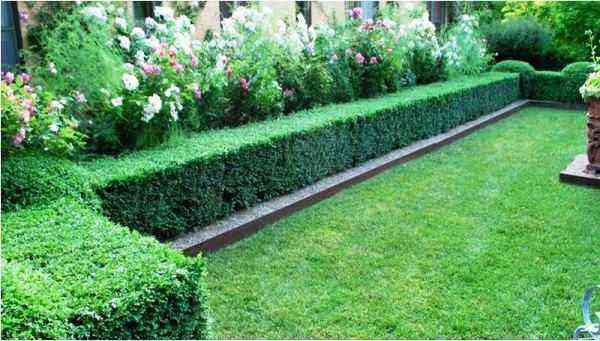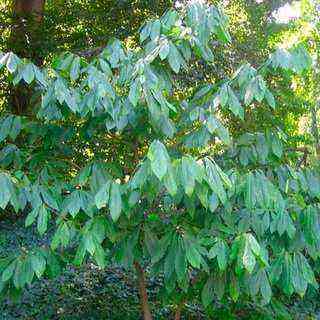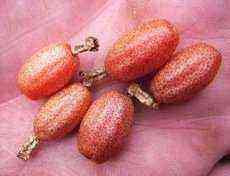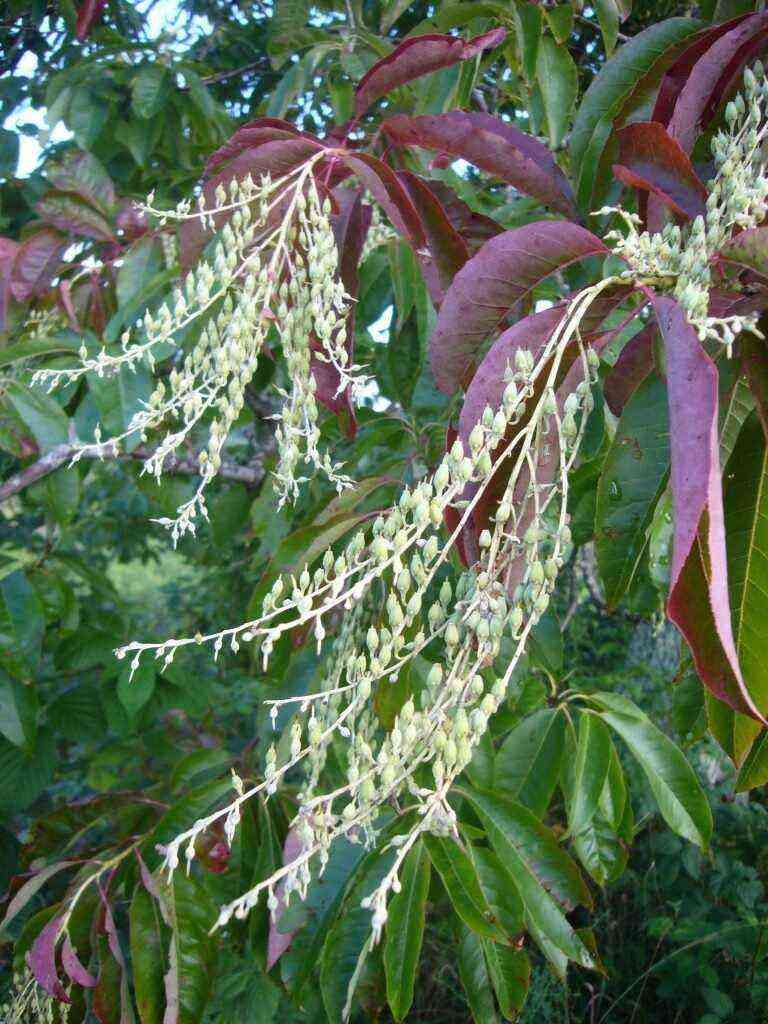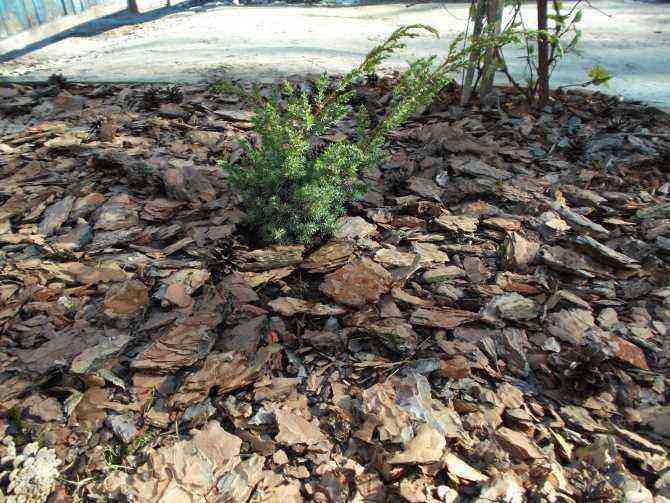Various berry bushes will not only decorate the garden, fill it with pleasant aromas, but also delight us with delicious juicy organic berries. Moreover, the berries ripen much earlier than the fruits of apples, pears and other trees. Berries are rich in various biologically active substances, vitamins, pectin, sugars, organic acids. Rosehip, elderberry, hawthorn, honeysuckle adapt well on difficult terrain. Bush forms have a branched root system, they perfectly restrain soil movements.
Preparing for planting
For planting berry bushes prepare ditches about a meter wide and about 60-70 cm deep. On poor soils, it is undesirable to plant in separately dug holes, because in 2-3 years, the roots will go beyond these pits and will be deprived of the nutrients necessary for their growth and development. The method of planting berry bushes in pits is justified only in the presence of loamy or chernozem soils.
To make the site look aesthetically pleasing, the lines along which the planting will be carried out are preliminarily outlined. Moreover, they do this in such a way that a distance of about 150-180 cm remains between the rows – in the northern strip; and about 180-200 cm – in the middle and south. Taking these lines for the center of future planting ditches, measure 45-50 cm in both directions. Dig in such a way that the upper part of the ditch is wide, and as it deepens, it narrows noticeably. This is due to the fact that in most berry bushes, the root system is distributed along the top of the planting ditch as it grows.
The preparation of the ditches is carried out in advance: if an autumn planting is planned, then the ditches are prepared in the spring; for spring planting – in the fall. The lower soil layers in the planting ditch must be enriched with nutrients: experienced gardeners use bone meal and ash for this purpose. Fertilizer is poured into the bottom of the hole, filling it to about a quarter of the depth. The upper part of the ditch is covered with earth mixed with well-rotted cow dung. Instead of ordinary soil, you can use a mixture of one part of sod land, one part of deciduous and one part of a well-rotted mullein.
How to distinguish from blueberries?
It is not easy for an uninformed person to distinguish other edible or poisonous berries from blueberries. There are a number of characteristic signs by which you can identify its fruits:
- bushes have rigid vertical stems;
- the plant takes root on any, even poor, soils, while most members of the berry family need fertile soils;
- the culture is resistant to damage by pests and diseases (some plants with poisonous fruits have this property);
- blueberry berries are quite large (up to 1,2 cm), have a rich shade, but their juice is colorless and does not stain your hands.
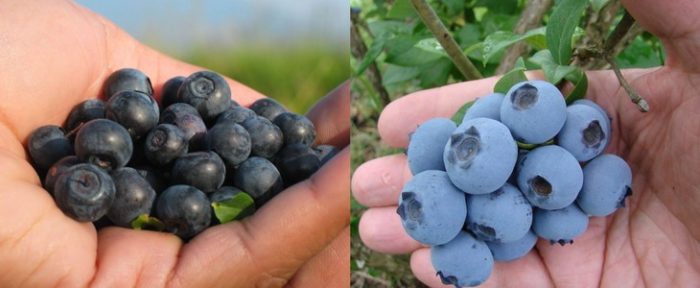

Blueberries, blueberries and other edible berries can not only diversify the diet, but also help treat various diseases, boost immunity and improve well-being. Plants with poisonous fruits can cause serious harm to the body, so you should not risk it: eat only those in which you are 100% sure.
5 / 5 ( 1 voice)
gooseberries

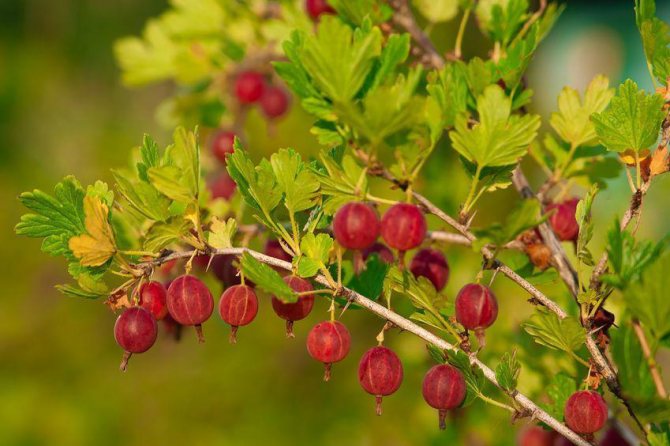
Almost all varieties of gooseberries provide good fruiting when located in areas open to the sun: shrubs planted in the shade often freeze because their shoots do not have time to fully ripen before the onset of frost, which is possible only in a sunny location. In regions with hot climates, this shrub can also be planted in slightly shaded areas.
The gooseberry is undemanding to the composition of the soil and grows well both on sandy and clay soils, especially if they are deeply dug, thoroughly fertilized, regularly loosened and do not overgrow with weeds. On sandy soil, the berries ripen earlier and are sweeter, however, they do not reach the same size as on more fertile soil.
As a rule, gooseberries are planted either in a specially designated area for it, or between fruit trees. But in the latter case, the shrub will have to be replanted when the overgrown tree crowns begin to shade it. At one time, in landscape design, gooseberries were used to plant a bed near paths: the bushes were planted at a distance of 80-150 cm from each other and pruned in time so that the branches retain the desired shape and do not grow too much.
Poisonous berry names
Poisonous berries, similar in appearance to blueberries, are also very diverse. Some of them have a sweet taste and pleasant aroma, but the consequences of eating can be different: from indigestion to serious health problems and even death.
Many poisonous berries can be found in forests throughout almost the entire territory of Russia:
- Raven eye. Round fruit that can be easily distinguished from edible plants. They are located one by one on the stems and really resemble a raven’s eye.

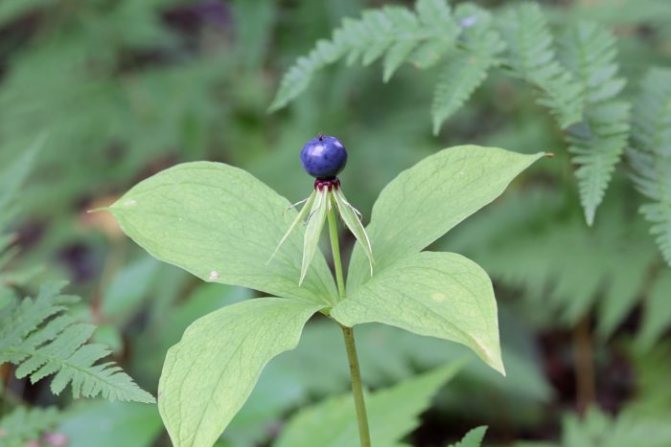
- Daphne. Grows in clusters on small bushes, found throughout Europe. Such fruits should not even be touched, as their juice can seriously burn the skin.

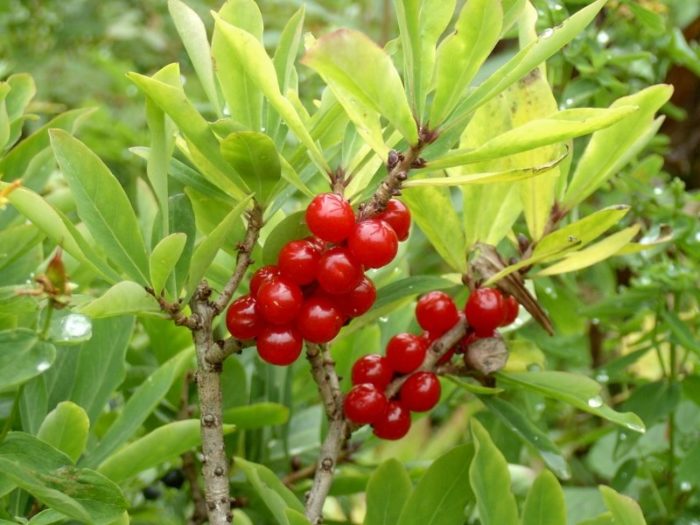
- Voronet. A perennial plant that belongs to the buttercup family, with large toothed leaves and black, round, very poisonous berries. An important feature is an unpleasant odor.
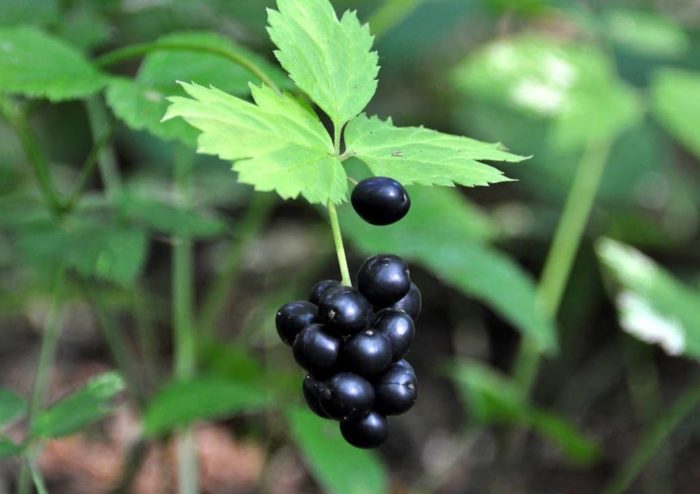
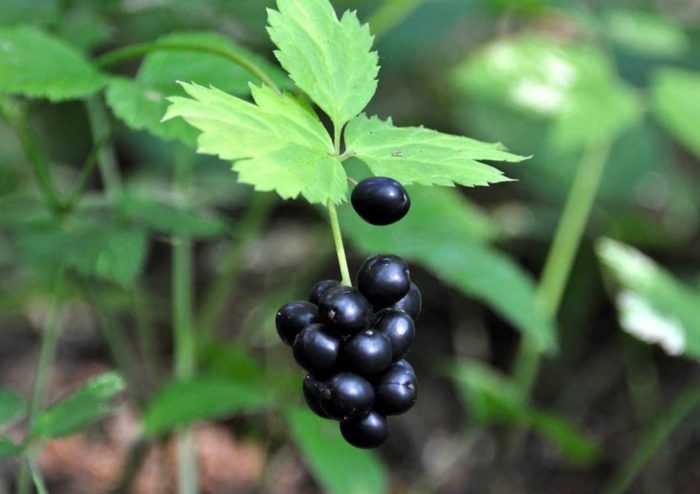
- Belladonna. The plant looks more like a nightshade than a blueberry: the berries are black and glossy. In microscopic doses, the extract from it is used in medicine, but if you eat several pieces, you can get severe poisoning.
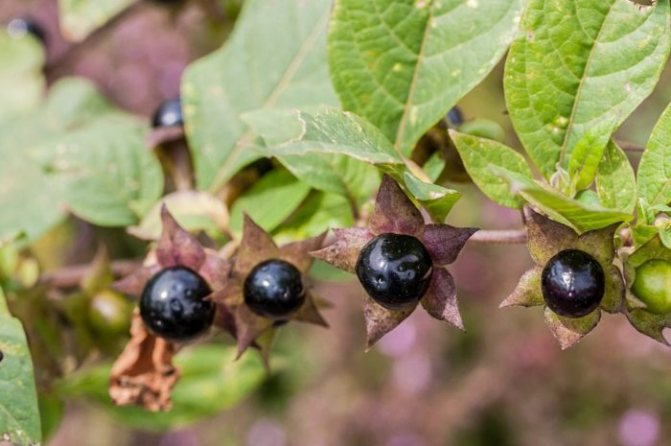
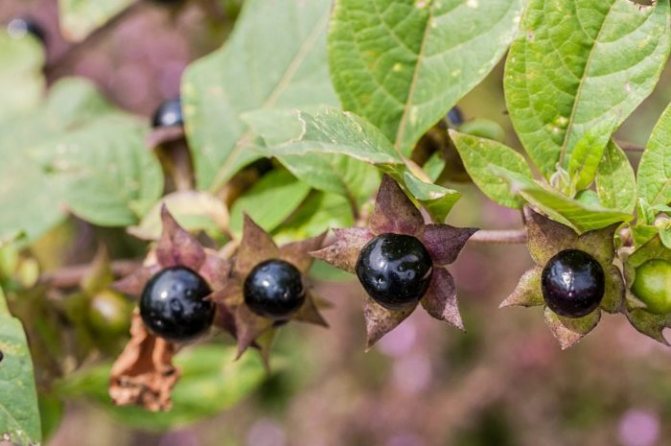
- Buckthorn. A short tree with simple leaves and black, slightly flattened berries. Buckthorn bark is used in folk medicine, and its fruits are eaten with pleasure by birds, but in humans they can cause disturbances in the work of the gastrointestinal tract.
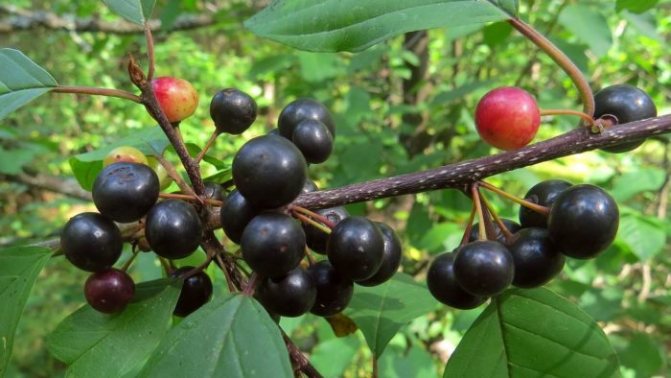
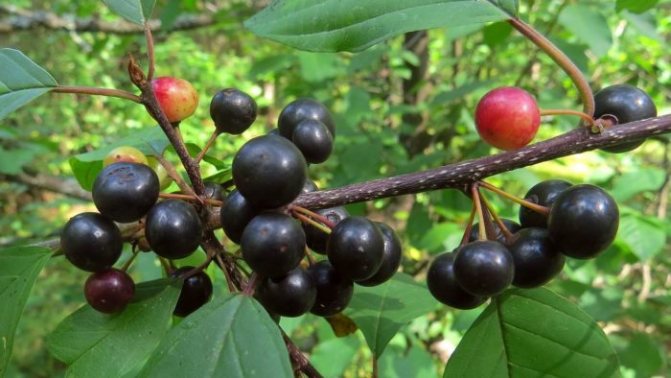
Poisonous plants that look like blueberries are especially dangerous for children: babies often try to taste everything that grows on bushes or trees, and their body is more susceptible to harmful effects. There are frequent cases of poisoning in adults, so it is better not to pick any berries on your own, but to buy in stores or in markets. If you meet an unfamiliar plant in nature, it is better to bypass it, otherwise the consequences can be the most sad.
Attention! If, after consuming unfamiliar fruits, you develop an upset stomach or other unpleasant symptoms, you should immediately consult a doctor.
Planting of gooseberry
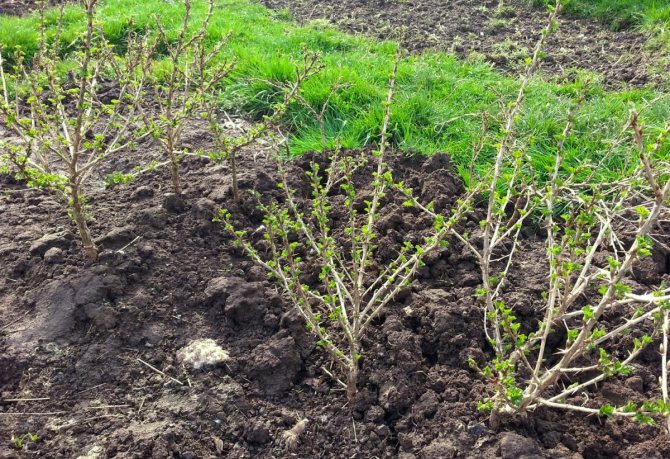

The best planting time is determined by the climatic features of the region: for example, in the northern strip, it is better to plant berry fields in spring. If the shrubs were purchased in the fall, then for the winter they are simply buried in a dry place protected from the winds, and planted in a permanent place in the spring. In the southern zone, where frosts begin quite late, gooseberries can be planted in September – the shrub manages to take root well, therefore, with the onset of warmth, it quickly grows, without wasting resources on rooting.
When growing gooseberries, surface fertilization is of great importance: a layer of humus or a well-rotted mullein is poured into the holes formed around the shrubs after a slight subsidence of the soil. The best results are shown by fertilization in early spring, after the first loosening of the soil. Thinning of the bushes also contributes to obtaining a bountiful harvest: when pruning, branches older than 4 years of age and young branches that grow too tightly or have a slope inside the bush are usually removed. The center of the bush is cut so that the strong side branches get enough sunlight and air.
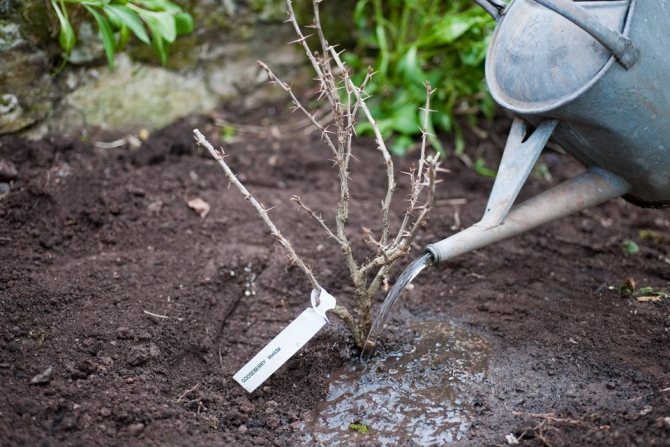
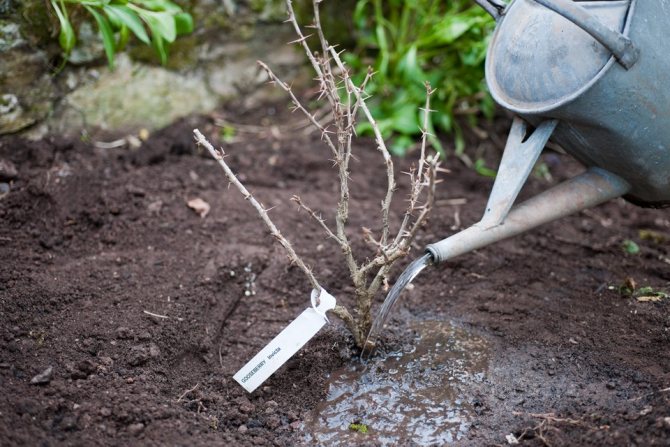
When using gooseberries as an element of landscape design, they are often given the shape of a tree. For this, one strong, even shoot is left at the bush, removing all the others as they appear. After the shoot reaches a length of about 50 cm, pinch its top, and only 3-4 of the side shoots are left, the most even and strong ones. It is these lateral shoots that will subsequently form a beautiful crown of the “tree”. Next year, 2-3 most advantageously located side shoots are again selected on the “branches” of the future tree, and the root shoots and other shoots are cut off, thus setting the desired crown shape.
Physalis in cooking
The use of physalis in cooking is quite diverse. The fruits of strawberry physalis with a dessert taste are especially appreciated. They are very often used to make various jams. There are even special jam varieties of this culture. They have a high pectin content. This berry can also be used as an additive to the main fruit filling, for example, pear or apple.
Also read: Berberana F1: the perfect tomato for greenhouses and greenhouses
For culinary purposes, you can use both ripe and unripe physalis berries. Just before that, it is imperative to wash off a special sticky substance from them. It is especially abundant in vegetable varieties of this culture. Berry physalis can be consumed fresh. It is also quite tasty when candied or pickled. If you dry them, then in terms of their taste they are practically not inferior to raisins. Due to the wide variety of physalis flavors, everyone can choose the variety that suits him. Vegetable varieties can even be used to make side dishes and vegetable stews. They are also very tasty in pickled form. They can also be prepared in a wide variety of ways: stew, roast, or bake in the oven. Vegetable physalis is added to sauerkraut, pickled tomatoes or cucumbers.
Dried Berry Physalis is an excellent alternative to traditional dried fruits. It is practically not inferior to them in its taste characteristics and useful properties. In addition, the price is several orders of magnitude lower than that of the same dried apricots or raisins.
Gooseberry propagation by seeds
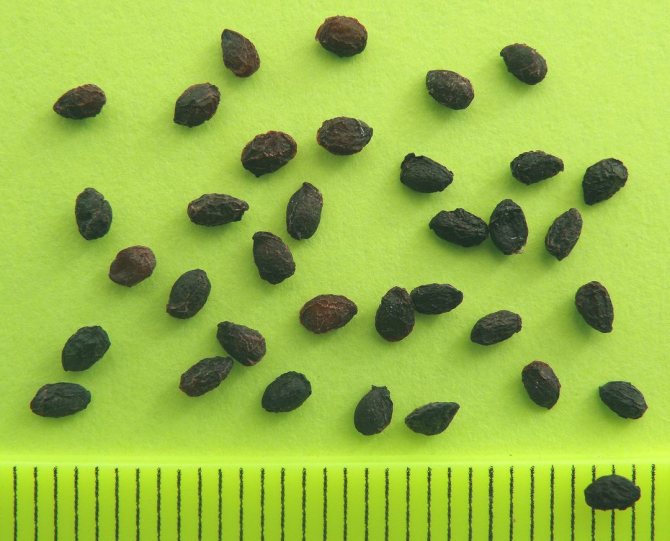
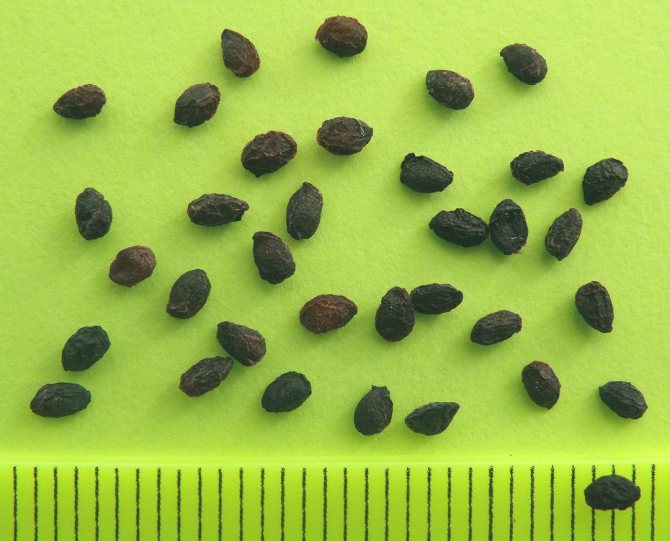
As a rule, most gardeners prefer to propagate gooseberries by cuttings and layering, although in some cases sowing of seeds is also used. To obtain high-quality seed, it is necessary to select the best berries, leaving them on the branches until they become completely soft. Such berries are carefully cut with scissors and left to lie on the windowsill for another ten days. Then the shell is cut, the seeds are separated from the pulp, thoroughly rinsing them with water. The dried seeds are stored in a paper envelope until sowing. The best time for sowing is autumn, but if there is a need to postpone sowing until spring, then the seeds are stored in slightly damp sand.
Despite the fact that the gooseberry grains are quite small, they need to be sown, leaving large gaps between the holes, because the emerged plants must be left in the ground without transplanting until autumn. In late August – early September, temporary beds are prepared for young shrubs, leaving a distance between rows of about 50-70 cm, and between plants – about 25-30 cm.When young bushes give the first berries (usually this happens at 3-4 years), the strongest and healthiest plants are planted in a permanent place in the garden, and all the rest are left in a temporary bed for another year.
Blueberries
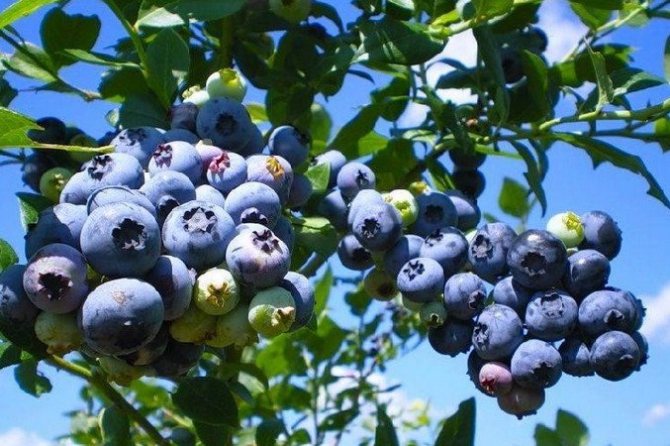

Blueberry is a very low, dense shrub that easily tolerates winter frosts. In its natural environment, it can be found in a mixed or coniferous forest, because, like conifers, it prefers acidic soil. Blueberries love shade, so they should be planted under trees or in other shaded areas.
Description
Blueberry is a perennial low-growing plant from the heather family, the height of the bush does not exceed 35 cm. The root is long, but spreads in breadth. Leaflets are smooth, up to 30 mm long, green, slightly covered with hairs. It begins to bloom in May with whitish-pink flowers. Blueberries are very similar to honeysuckle fruits, differing only in spherical shape and size.


Care instructions
Regular pruning of blueberries begins at the age of 3, as always, dry and damaged branches are pruned. Many sources indicate that there should be about 8 branches on the bush, which are the basis of the bush. If a large number of side shoots appear on blueberries, they must be removed completely, since the berries on such branches are very small and ripen for a long time. Bushes that are more than 10 years old need to be cut 20 cm from the ground, this procedure rejuvenates the plant and increases the yield.
Blueberries need frequent but moderate watering.
Excessive moisture leads to root rot.
Reproduction of gooseberry by layers
For this breeding method, the strongest specimens are selected. The ground around the shrub is carefully loosened, then individual shoots are attracted to it with hooks. The place of attachment of the shoot is carefully covered with soil, which is kept moist. Sometimes, to speed up this process, the diverted shoot in the place where it will be covered with earth is slightly damaged: it is slightly incised, slightly twisted, i.e. contribute to increased movement of juice and the formation of young roots.
If you need to get not one, but several young individuals, then the layering is done in a slightly different way: thin branches are pressed against the loosened ground along their entire length and lightly, literally 5-6 cm, sprinkle them with loose soil. From all the eyes on the branch, shoots will have to develop. At the end of summer, the branch can be cut into separate fragments (young individuals) and transplanted into temporary beds.
Newbies’ mistakes in hosting planning
There are some features of growing fruit and berry bushes that must be taken into account:
- Shrubs grow best on a small slope and in good natural light.
- The site must be carefully selected, since the shrub grows in one place for 10-15 years.
- Bushes are planted anywhere on the site, but they should have enough lighting and free space.
- Any berry shrub needs moderately moist, fertile soil.
- Plants do not tolerate excess moisture or high groundwater levels.
- The landing site is prepared one and a half months before the procedure.
Gooseberry propagation by cuttings
Unlike currants, in gooseberries, propagation by cuttings is much more difficult. Cuttings planted in open ground give such a small percentage of rooted plants that greenhouse propagation is more effective.
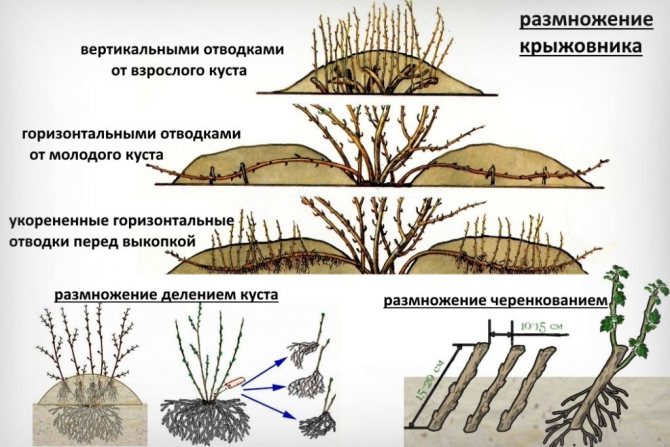
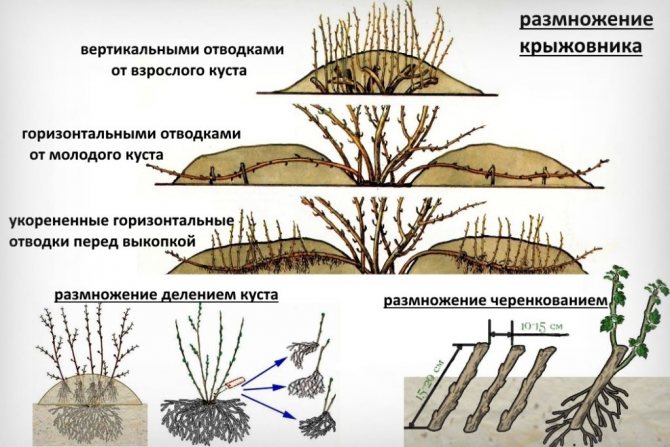
Cuttings are cut from the shoots of the current year at a time when their growth ends and they are sufficiently strong. As a rule, such shoots are flexible enough and do not break when you try to bend them. Each stalk should be quite long: about 7-8 eyes; from the bottom, which will be immersed in the sand, it is necessary to remove all the leaves.
Sand or sandy soil is poured into greenhouses, the beds are tightly covered with glass or film, which are shaded so that the plants are not exposed to direct sunlight. As soon as the cuttings take root, they are planted in temporary beds, but in areas with a rather cold climate, it is recommended to leave young plants to winter in greenhouses.
Cranberries
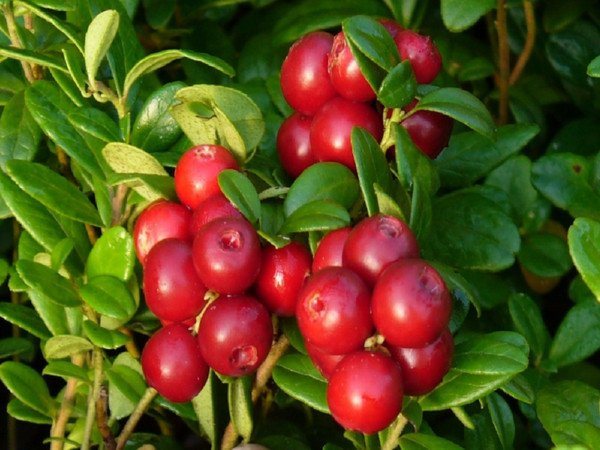

Cranberry is considered a unique berry, as it has not only original taste, but also unique healing properties. In addition, the plant can be used to decorate the backyard area — delicate flowers and bright berries will adorn any summer cottage.
Description
Cranberries are an evergreen dwarf shrub from the Lingonberry family. The shoots of this marsh plant spread out almost a meter, forming a dense carpet of leaves and thin branches. The leaves themselves are usually small and do not exceed two cm in length and one cm in width. The color of the foliage is predominantly dark green with a bluish tint, due to a waxy bloom on the underside. Cranberry flowers are arranged in pairs on long pedicels, drooping in appearance and with four lobes bent upward. The color range ranges from pink to red. The bush opens in late spring or early summer. And by August-September, bright red large berries are fully ripe on the plant, which persist throughout the winter.

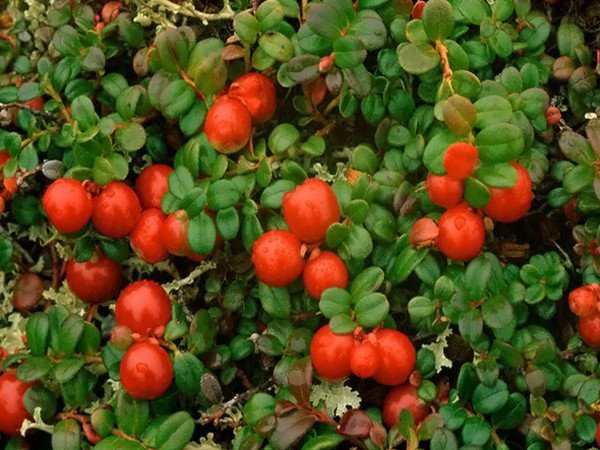
Currant
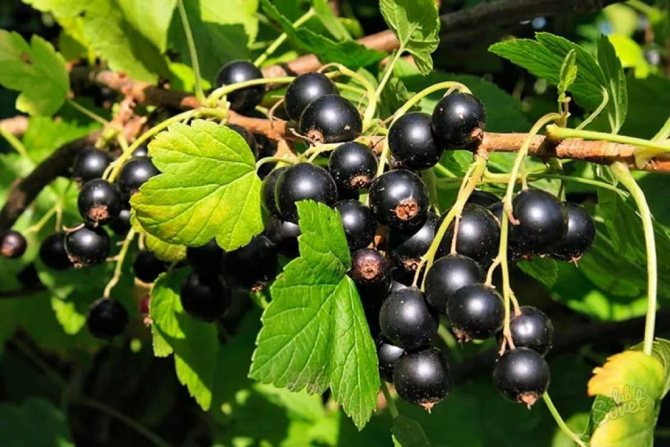

Caring for all varieties of this berry shrub is not much different from caring for gooseberries, but currants reproduce equally well by seeds, and by layering, and by grafts. Traditionally, propagation by cuttings is considered the easiest way. they take root quite easily and quickly take root in a temporary or permanent landing site.
The best time for planting cuttings is considered early spring or early August. The length of the cuttings cut directly depends on the variety of currants: the stronger the growth of the shrub, the longer the cuttings should be. For reproduction in this way, last year’s young shoots or, in case of their lack, two-year branches are usually used. The bottom cut of the cutting is usually done in a straight line, just below the first bud; upper – above the kidney, obliquely. There should be 6-8 eyes between the upper and lower cut.
Also, experienced gardeners practice reproduction by “arc” cuttings. To do this, cut off long young shoots and plant them on the beds, having previously bent into an arc so that the upper and lower ends of the cutting are immersed in the ground. As practice shows, the rooting of such cuttings is somewhat faster than when using traditional methods.
What is most often planted
There are berry bushes, which are more common than others on personal plots:
- raspberries;
- gooseberry;
- blackberry;
- honeysuckle;
- currant;
- blueberry;
- sea buckthorn;
- irga (corinka).
The berries of these bushes contain a large supply of vitamins useful for the body. In addition, the plants bloom beautifully and have an aesthetically pleasing appearance.
Raspberry
Raspberry fruits are used for colds, as a diaphoretic and antipyretic agent.
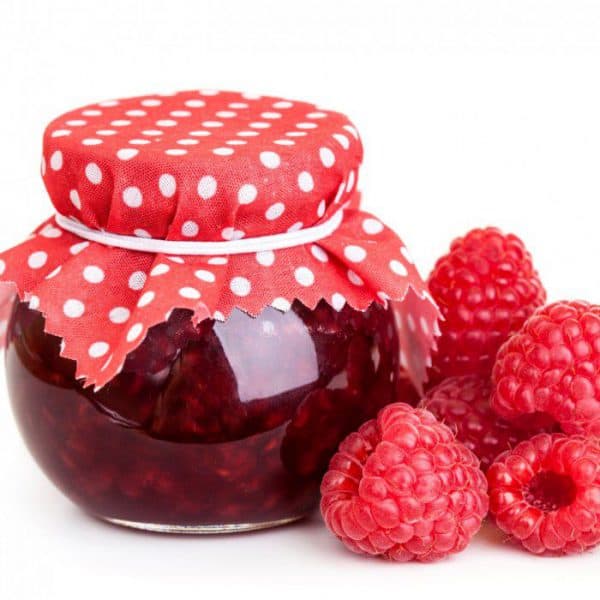
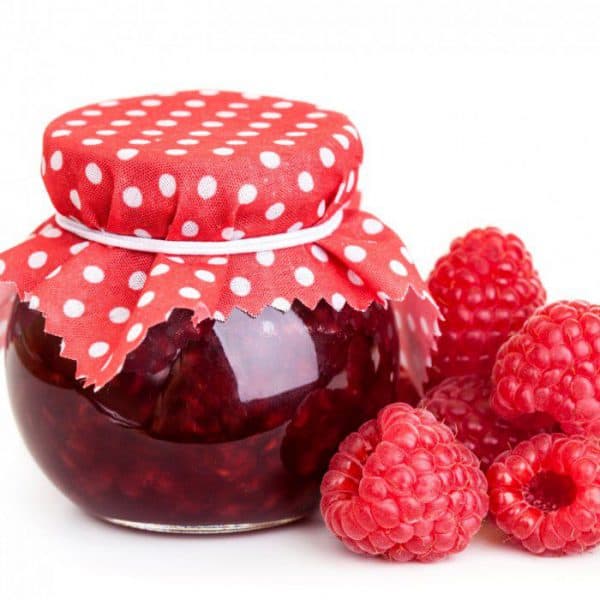
Due to the high sugar content (up to 11%), raspberries are used for the preparation of juices, alcoholic beverages, jellies, marmalade, and preserves.
Berries are eaten fresh or frozen. Raspberry fruit composition:
- Sahara;
- vitamins A, B, C;
- organic acids;
- alcohols;
- ketones;
- catechins;
- tannins.
Raspberry seeds can contain up to 22% fatty oil. Depending on the species, the shrub has red berries, less often the fruits are colored purple-black or yellow.
Popular varieties
There are mainly three main plant varieties:
- Classic type early, middle or late ripening. Shrubs take root under any conditions. Their disadvantage is their low yield.
- Large-fruited species bring a high yield. Berries can grow up to 12 g each.
- Repaired raspberry most popular, bears fruit from the first year.
Care
The raspberry bush needs constant loosening, watering and fertilization.
The plant is planted in spring or autumn. In the spring, you should cut and tie up the bushes, and carefully cover for the winter. These measures will be ineffective without protective treatment against diseases and pests.
Harvesting is done with protective gloves, since many types of raspberry bushes are endowed with thorns.
gooseberries
The shrub in different countries has different names. Possessing unpretentiousness, the plant bears a lot of berries. The fruits are green, reddish-brown or yellow. The composition includes:
- Sahara;
- free acids;
- pectin substances;
- vitamins A, B, C, P.
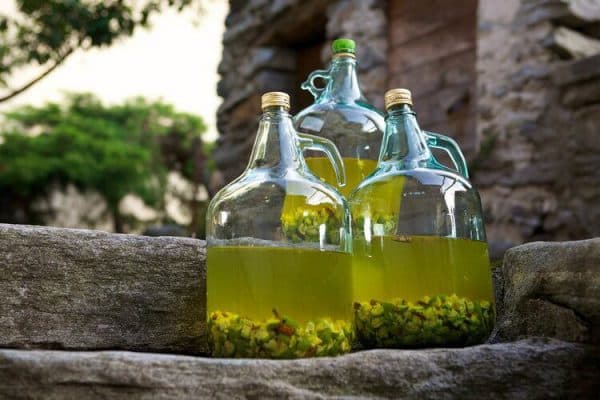

Gooseberries are consumed fresh or processed as drinks, jam, jelly, marmalade or wine.
The fruits are used in medicine for obesity or metabolic failure, have a laxative, diuretic and choleretic effect.
The shrub bears harvest from the third year. The earliest honey plant among berry bushes.
Popular varieties
- American species bring a rich harvest, respond well to drought. The size of the fruit is slightly less than that of European varieties.
- European gooseberry known for its taste. Its popularity is reduced by its weak resistance to disease and frost.
- Hybrid varieties collected all the best qualities, so they are more often found in garden plots.
Care
When choosing a planting site, it is necessary to avoid acidic soil, and place lime and compost in the planting trench. The gooseberry is planted in the fall, as the spring planting will lead to its death. The shrub is pruned periodically to remove dry, damaged or old shoots. The fruits are harvested as they ripen, preferably with hand protection as the plant has thorns.
The gooseberry shrub does not tolerate shading or waterlogging of the soil, but it tolerates drought well.
BlackBerry
In the conditions of the garden, the shrub is grown recently, before that it grew only in the wild. Natural varieties are not popular due to sharp thorns, but breeding work has made it possible to breed plants without them. Ripe berries are colored black or black and purple and have a sour taste. The fruits are used fresh or for making preserves, jams.
The appearance of the shrub resembles black raspberries, but in terms of useful properties and taste, blackberries surpassed the fruits of raspberries.
Popular varieties
- Repairing blackberry able to bring crops twice a season – in June and August.
- Semi-creeping varieties shrubs are quite rare. In the garden, it is recommended to plant just such bushes.
- Upright species most common among gardeners. The shrub brings a good harvest, and also saves space on the site.
Care
Bushes bear fruit well on the ground with top dressing. Straight plants need a garter for young stems. Shrubs are planted in a trench strictly along the line. With a different planting method, the process of caring for plants is complicated. During the fruiting period, blackberry bushes should be watered generously.
Some types of blackberry bushes are capable of growing strongly, forming impassable thickets, therefore, they need timely pruning.
Honeysuckle
Due to the bright flowering (in late May to mid-June), shrubs are used for decorative purposes. Honeysuckle contains many beneficial vitamins. The crop ripens in mid-May and has a slightly bitter taste.
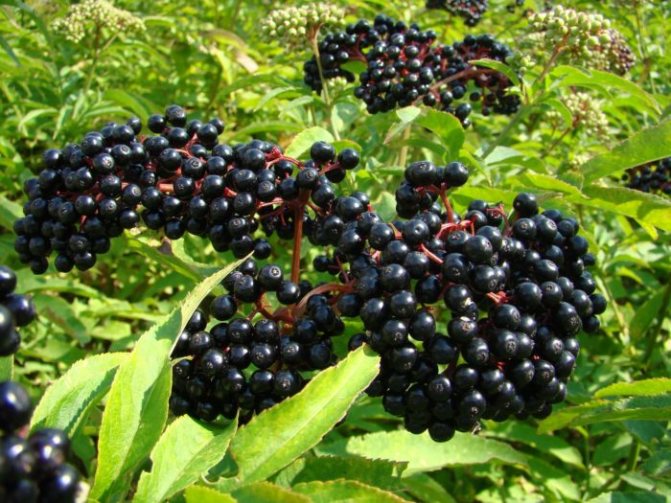
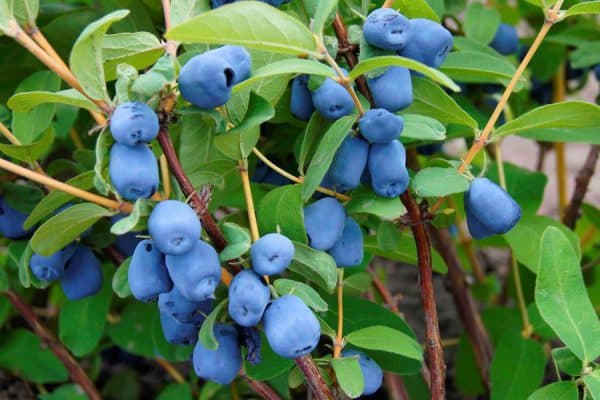
Edible honeysuckle varieties can be grown in the garden. Due to the high content of the element of youth (selenium), the fruits are often called rejuvenating berries.
Popular varieties
- Mid-late views bring berries until late autumn.
- Long-fruited varieties differ in medium-sized shrubs, with a cylindrical shape of the fruit.
- Hybrid plants obtained by crossing different varieties from which they have collected the best qualities.
Care
Honeysuckle shrubs do not grow well in the shade. When planting, choose areas with sufficient natural light. Plants take root well when planted in spring or autumn. In spring, honeysuckle is planted before the start of the growing season. The bush grows rather slowly, so it needs regular feeding.
Plants at 6-8 years old need sanitary pruning. Old or damaged shoots are removed, only young shoots remain on the bush.
Currant
Currant fruits are known for their beneficial properties and high taste. The plant is unpretentious and brings a rich harvest. Due to the difficult choice, the simultaneous planting of several species is practiced.
Young seedlings are quite resistant to cold winter conditions. Ripe berries are eaten fresh or used to make jelly, marmalade, preserves, compote, syrup or currant wine. Fruits and leaves are used in the preparation of decoctions or tea. Blackcurrant juice is used to create natural food colors.
Popular varieties
- Black currant. There are different ripening periods. The most popular are large-fruited species. These include Yadrenaya, Titania, Selechenskaya.
- Red has heavier bunches. Shrubs grow up to 20 years without changing their place.
- White currant varieties in terms of characteristics, they are not inferior to the red variety.
- Hybrid types were obtained by crossing different types of currants and gooseberries. These include a hybrid of currants and gooseberries Josht, which you can read about here.
Care
Currant care is quite unpretentious. It requires regular pruning, feeding and processing, because it loves aphids and ants very much. The currant bush bears fruit well in drained soil. During the growing season, it is necessary to loosen the soil around the plant. You should not allow the soil to completely dry out; in case of drought, water the shrubs in time.
You can not plant currant bushes in soil with an acidic environment. In the fall, it is necessary to rejuvenate the shrubs by cutting off old shoots.
Blueberry
Gradually, blueberries are gaining popularity among gardeners, because when properly processed, the plant produces a good harvest of useful fruits.
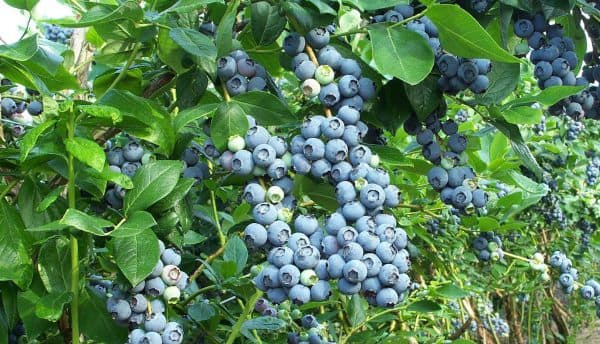
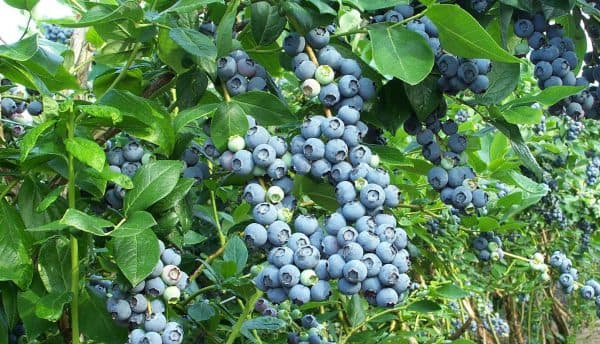
In many regions, blueberries are considered a rare shrub. Usually found in the wild.
Outwardly, blueberry berries resemble blueberry fruits. Blueberries are used in jam, juice and wine making. Due to its dietary properties, it strengthens the walls of blood vessels, regulates the work of the heart and the digestive system.
Popular varieties
- Stunted blueberry it is distinguished by a neat structure of the shrub, abundant spring flowering and a rich harvest.
- Tall bushes used as a hedge. Branched shoots contain fruits colored with an intense blue or blue hue.
- Southern varieties blueberries are obtained by hybridization. They are suitable for growing in arid climates.
Care
Blueberries are highly susceptible to the composition of the soil; conditions for fertility should be created for the shrubs. Plants take root in the same way, regardless of the method of planting – seeds or division of the bush. Pruning is carried out only in adult plants, from 5-6 years of age.
In the garden, it is advisable to plant suitable cultivated varieties rather than wild shrubs.
Sea buckthorn
Plants love places near water bodies, which is why they got the nickname “sea thorn”. Sea buckthorn fruits have a wide range of applications – making compotes, juices, wines. Sea buckthorn oil is of particular value. It is widely used in medicine and cosmetology as a component of medicines, lotions, ointments. Shrub leaves are raw materials for tanning.
Popular varieties
- Large-fruited species have a sweeter berry taste, and there are no thorns on the bush.
- Garden varieties characterized by early, middle and late ripening.
- Botanical sea buckthorn practically has no thorns.
Care
The shrub practically does not need watering, except during periods of drought. Due to the low resistance to severe frosts, the soil around the bush should be carefully covered for the winter. Spring pruning is carried out annually, and 8-12 year old shrubs rejuvenate under the stump.
Shrubs of sea buckthorn will bear fruit only when the female and male types are planted closely.
Irgu
Due to its attractive appearance, the shrub is usually used for decorative purposes. The plant is quite winter-hardy, therefore it can withstand harsh climatic conditions. The taste of the fruit bears some resemblance to cherries. The composition of the fruit includes:
- ascorbic acid (up to 40%);
- Sahara;
- acids;
- tannins;
- carotene;
- dyes.
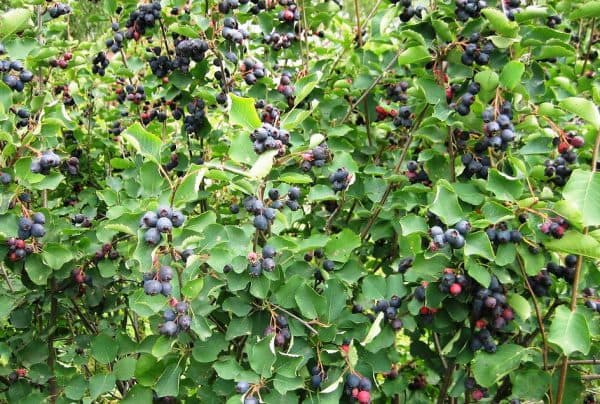

Berries can be eaten fresh or processed on jelly, marshmallow, jam, wine. Dry fruits are used for compotes and jelly.
Irga is a multivitamin, promotes the work of the circulatory and nervous systems. Decoctions of bark and leaves are used as an astringent and coating agent.
Popular varieties
- Canadian Irga. The tree plant grows tall enough. The fleshy fruit tastes good.
- Alder-leaved. In spring, the variety blooms thickly, and in autumn the foliage takes on a bright shade. The shrub is capable of producing up to 10 kg of berries.
- Blood red. Smooth bush of medium vigor. The fruits are distinguished by a thin skin and juicy pulp.
Care
Differs in high unpretentiousness and practically does not need care. Moreover, the plant loves abundant watering, especially during the growing season.
Formative pruning is carried out for the first 2-3 years after planting. An older plant undergoes a rejuvenation procedure.
Irgu berries are attractive to birds, so the harvest should be removed from the shrub in time as the fruits ripen.
Trellis forms of currant

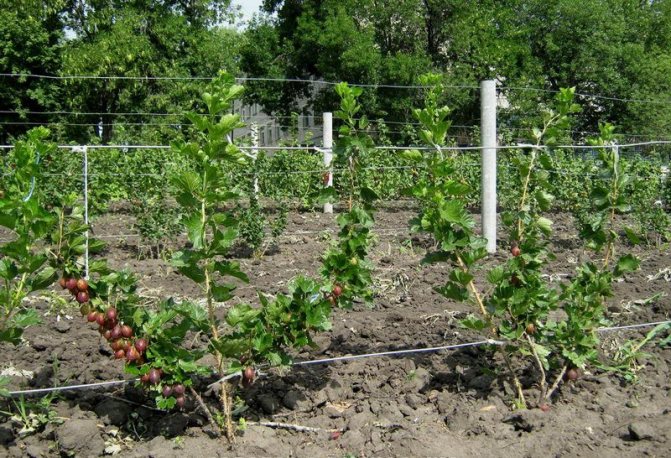
In the century before last, the most fashionable element of Russian landscape design were standard and tapestry forms of currants, and the latter were most popular with the owners of suburban areas. To remove the trellis forms in the fall of the second year, cuttings were cut off, leaving only two shoots intact, from which the branches of the palmette or fan-shaped trellis were formed.
The decoupling of the shoots along the trellis must be done while they are still quite plastic and easy to shape. When the shoots grew to a length of 4-5 internodes, they were pulled with a rope to the trellis and bent in accordance with the intended shape of the future shrub – this suspended the growth of shoots and stimulated the formation of lateral eyes.
Decorative horizontal fences made of red and white currants look no less impressive: as a rule, they are used to frame flower beds and green lawns. For these purposes, the cuttings are planted in the right place, one of the developing shoots is left, which is bent parallel to the ground. Fixation of the shoot in the desired shape is carried out using wooden templates made in the form of the letter “L” with an elongated upper crossbar.
After 2-3 weeks, when the shoot takes the specified shape, the template is removed, and the branch is tied to a horizontally stretched thick wire. Such decorative living fences look very beautiful due to unusually large berries that are effectively combined with plants blooming in flower beds. The peculiarity of molded fruit growing, in addition to its excellent visual component, also lies in the fact that the berries on molded trees are usually much larger than on traditional bushes.
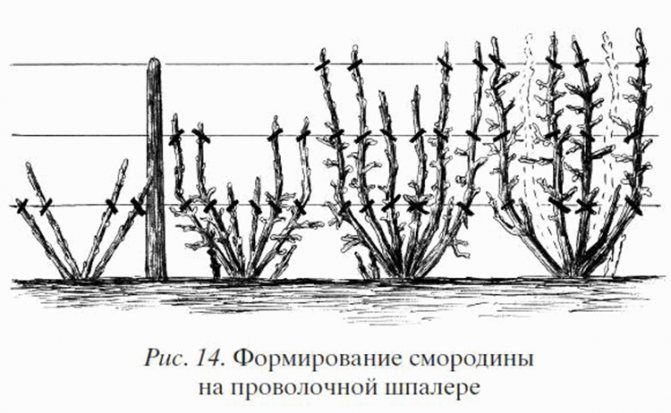
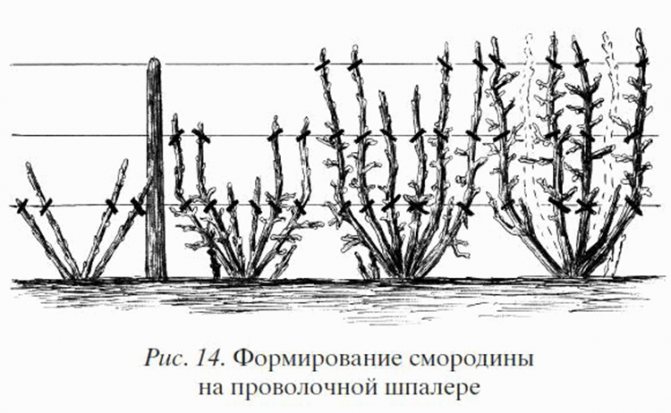
This is due to the fact that the juices are not directed upwards, but linger on the artificial bends of the branches, which favorably affects the fruiting of the shrub. In addition, the branches are located at a sufficient distance from each other, and therefore receive a sufficient amount of sunlight, in contrast to an ordinary bush, where, as a rule, only external shoots bear fruit.
List of edible long berries
In addition to honeysuckle, there are many other oblong-shaped dark-colored berries. Most of them grow in forests, but there are also garden varieties. Each of them has its own taste, characteristics and characteristics.
- Barberry. Small, elongated fruits that grow on small bushes with green leaves. Most often they have a pink or red tint, but there are dark blue or almost black varieties of the culture. Barberry contains a large amount of vitamin C and is used for making medicinal tinctures and preserves.

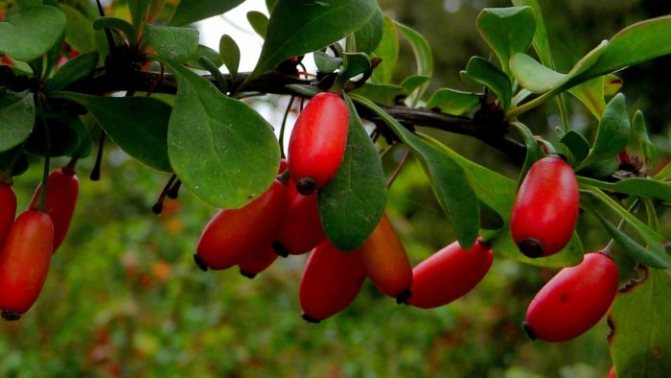
- Elder. Black elderberry has a shade corresponding to the name and is collected in small brushes. Fruits of a sweetish, slightly tart, astringent taste. The berries of the plant contain natural antioxidants, as well as vitamins and minerals that fight colds, increase immunity, and improve the work of the cardiovascular system.

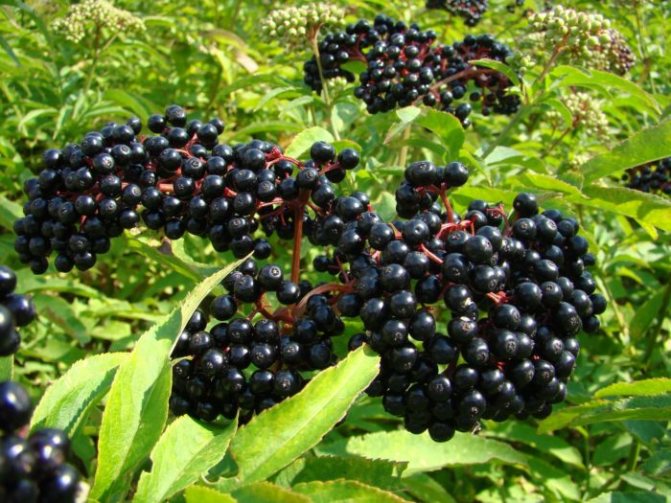
- Chokeberry. The berries look practically the same as blueberries, but they do not grow on bushes, but on a small tree. They have a sour-bitter taste, so they are most often used to make preserves and jams. Chokeberry is a natural antioxidant and one of the record holders for vitamin C.
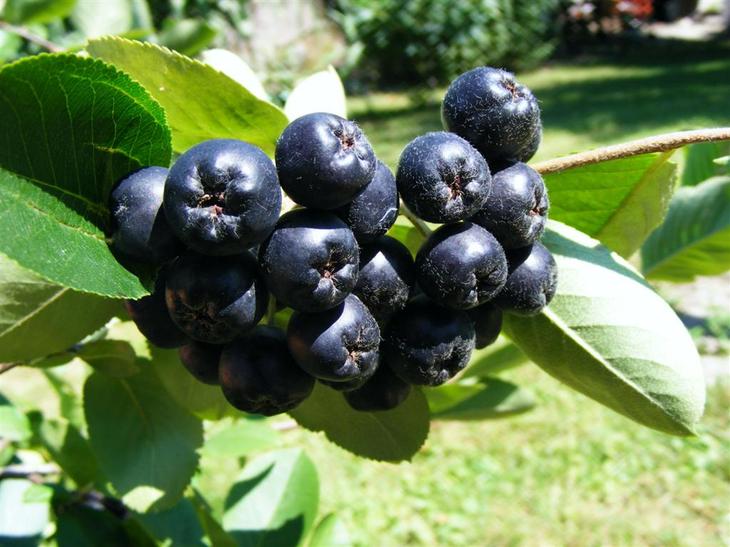
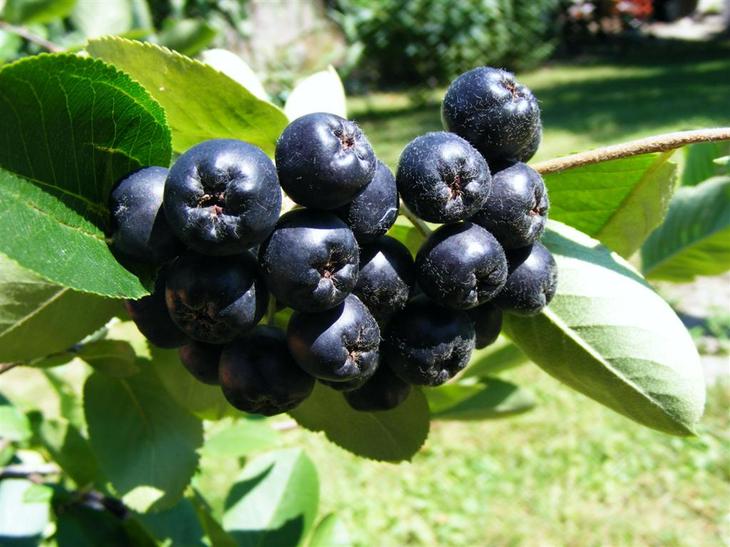
- Dereza (goji). Goji berries are well known to everyone who dreams of losing weight: they are often called an exotic plant, but in fact it is an ordinary wolfberry. These are small, oblong-shaped berries that look slightly wrinkled and come in red or black. They are rarely eaten in their natural form: usually decoctions, teas and juices are prepared from wolfberry, which contain a large amount of minerals, vitamins, essential oils and other useful substances.

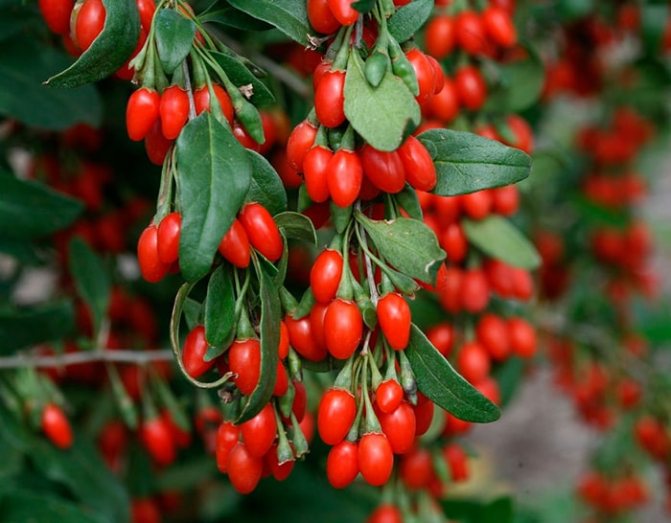
- Bird cherry. In our country, bird cherry is used as an ornamental plant, but not everyone knows that many of its varieties can be eaten. Bird cherry fruits are round, slightly elongated, dark in color and sweet, slightly tart aftertaste. They contain many useful substances and are used to make syrups, preserves and jams.
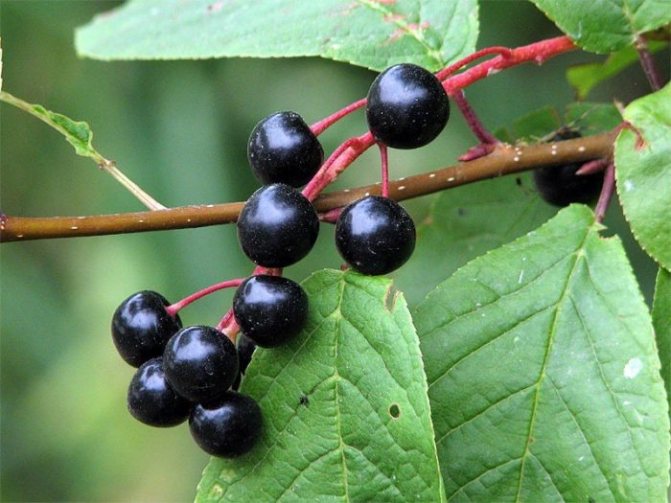

- Nightshade. Grows on small, compact bushes. It is slightly larger than blueberry and has a dark shade and glossy surface. It has an antihelminthic effect, relieves cramps and headaches, but only ripe fruits are suitable for food, since the unripe ones contain toxic substances.


It is quite easy to confuse these berries with blueberries, especially for the townspeople who are rarely out in nature. If you find dark oblong berries in the forest, but are not sure about their origin, it is better not to taste them. In addition to safe elderberry, bird cherry, wolfberry, etc., you may come across poisonous plants, and their use is extremely dangerous to health.
Important! Some varieties of elderberry and honeysuckle are also inedible, so before harvesting, you should clarify which species this or that plant belongs to.
Raspberry
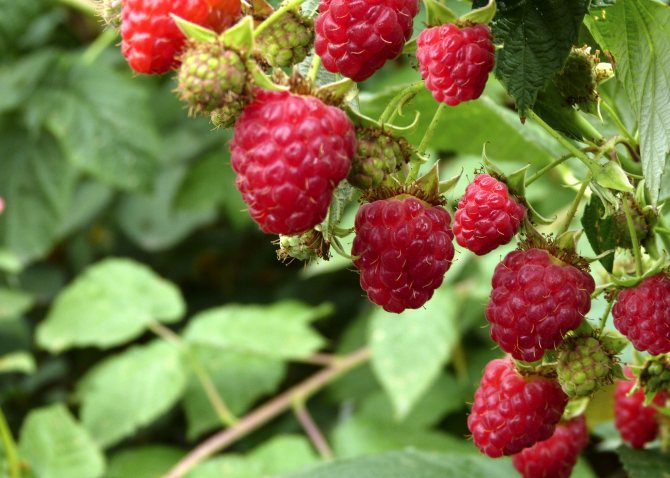
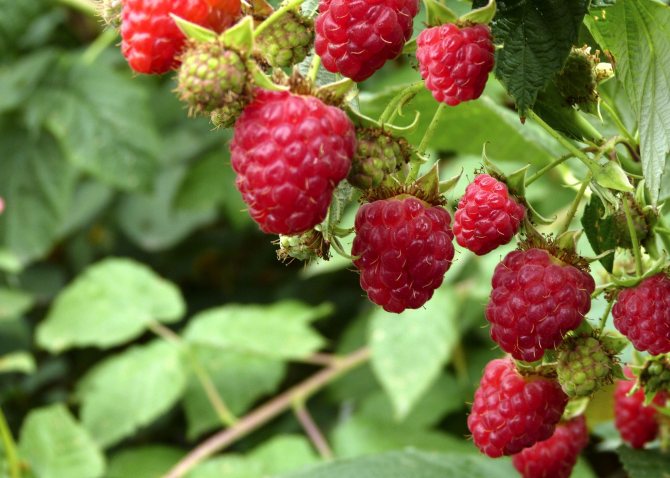
Raspberries are rightly considered the most unpretentious berry shrub, but this does not mean at all that this plant can be planted in the backyard of the garden, where the sun almost never looks. Raspberries, indeed, prefer light shading, but only at midday, the hottest hours; the rest of the time, this shrub should be exposed to the sun’s rays. The same applies to soil moisture: excess moisture can be useful for this berry shrub only in regions with a fairly hot climate; in the middle or in the northern lane, high soil moisture will lead to the fact that varietal raspberries will often freeze out.
Also, attention should be paid to the distance between the rows of shrubs: in amateur gardens, the raspberry tree often turns into impenetrable thorny thickets, which do not allow achieving good fruiting and a favorable aesthetic perception of this part of the garden. The most rational is the distance between the rows of 80-140 cm (depending on the type of raspberry); the optimal distance between individual bushes is about 1 m.
Growing irgi
This shrub is often used as an ornamental one. However, irgi berries are very healthy and tasty, they taste like cherries, so connoisseurs plant bushes in their plots. In addition, this plant can withstand even the most severe conditions, the harvest can be obtained from the fourth year of planting.
The Canadian Irga is a tall shrub that produces dense and tasty berries. Alder-leaved irga blooms beautifully in spring, and in autumn its bright leaves become a garden decoration. From bushes of this type, you can collect up to 10 kg of berries… Red irga is a medium-sized bush with juicy and tender berries.


Irga does not require special conditions and care. These fruit shrubs love moisture and should be watered abundantly during the growing season. The first 2-3 years after planting, the bush must be formed by cutting, and adult bushes need to cut off old branches. Poultry also appreciate the delicious berries of the irgi, so the crop should be harvested as it ripens.
The choice of berry bushes for the garden is large enough, so it is difficult to choose one, but you can diversify the site by planting several species and varieties. Choose varieties taking into account personal preferences, characteristics of plants and the peculiarities of caring for them. A little patience and skill – and you will be able to appreciate the taste and benefits of berries.
Planting and caring for raspberries


Despite all the unpretentiousness, raspberries are quite demanding on the quality of the soil: a lack of nutrients usually leads to the fact that every year the harvest of berries becomes more and more scarce – both in quantity and quality. You should pay particular attention to the fertilization of loose and sandy soils: in addition to traditional top dressing, a sufficient amount of clay should be added to the soil so that the root system does not suffer from excessive dryness.
The planting time of raspberries is determined in accordance with the local climate: in warm regions, autumn planting is advisable; in harsher climates, it is safer to plant raspberries in spring. The disadvantages of spring planting include the fact that raspberries, like currants and gooseberries, under favorable temperature conditions, start growing too quickly and throw out buds. Bushes planted in this form die during the first dry days. To avoid such an unfortunate circumstance, pre-purchased raspberry seedlings should be kept slightly dug in a dry, high place until spring.
Healing blueberry
Blueberry – taiga healing berry rich in vitamins… Most often, blueberries can be found in the wild, but gardeners are interested in growing them for their beneficial properties. By providing the shrubs with good care, you can get a good harvest of these berries, which look like blueberries.
Tall varieties have sprawling bushes and blue or blue berries. This variety can be used as a hedge on the site. Low-growing varieties are distinguished by neat bushes that bloom beautifully and magnificently in spring, as well as large yields of berries. Southern special varieties were bred specifically for cultivation in conditions of frequent drought.
It is better to plant blueberry bushes in a sunny place in spring. Blueberries are sensitive enough to the soil, so the soil needs to be fertilized frequently. The varieties adapted for the garden take root easily and give high yields. From 5-6 years old, you should cut off the old branches of the bushes.
Reproduction of raspberries


Raspberries, starting from the age of two, produce a large amount of root growth, which is easy to use to expand and renew the berry garden. Specimens with weak, bare roots must be discarded, and strong specimens with a well-branched root system are cut off from the mother plant with a shovel or sharp knife and used for reproduction.
Autumn is considered the most successful time for planting young plants: the shoots will have time to take root well and adapt to new conditions of existence. If, for some reason, planting is postponed until spring, then the plants dug in for the winter should be planted as early as possible, until the moment when the shoot that has developed from an underground bud reaches impressive sizes.
